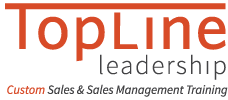This is a story about two companies’ sales funnels. One company has a sales funnel that improves win rates, the other doesn’t.
“Company A” uses the most common approach, orienting its sales funnel to the steps of its sales process: qualifying, solution identified, quotation provided, demonstration delivered, etc. You know the drill.
Company B uses a funnel based on the customer’s buying process. Each stage of the funnel identifies specific actions that customers take when they are moving forward in their buying process. It is these “customer go forward actions” that salespeople seek to achieve as they progress an opportunity through their funnel.
Company A’s funnel causes everyone, both salespeople and sales managers, to focus on the steps of their sales process. Sales opportunities are tracked based on sales tasks performed by the salesperson.
Because of the inward focus of Company A’s funnel, a sales opportunity can seem to be progressing quite nicely because the salesperson is doing everything the funnel described. But if the customer slows down their buying process or the rep makes a mistake, nobody knows until it’s too late because neither the rep nor the sales manager is measuring the success of each sales call based on customer actions. They often get blindsided when a “sure-thing” is lost, or goes radio-silent.
In short, the sales behaviors defined in Company A’s funnel are an inaccurate metric because sales reps are so often out of sync with customers’ views.
Another flaw in Company A’s approach is that it is based on sales process statistics that are lagging indicators (data collected after a process is complete) – such as how many calls, appointments, demos, and quotes have been made. Therefore, most coaching done by sales managers at Company A is what I would describe as “performance management.” That’s where a sales manager reviews what a sales rep has already done. Typically, then, the manager cracks the whip by saying, “make more calls, and do it faster!” Meanwhile, the rep is thinking, “That’s the same advice you gave me last month and it didn’t help.”
Over at Company B, things are run differently. A few years ago they became alarmed about poor user adoption of their CRM system. Salespeople were not inputting information in a timely manner, so the accuracy of the information being recorded was questionable. Not good.
Company B recognized that simply providing more training on CRM usage wasn’t the answer. They wanted their sales force to be more motivated to use CRM. But that would only happen if sales managers used CRM to become more effective sales coaches – proactively coaching salespeople through big deals in a constructive way so that reps won more deals and made more money.
Providing sales managers with improved visibility on customer actions in the earlier stages of a deal was a big reason why Company B switched the focus of their sales funnel to be focused on the buying process. Most sales managers are instinctively drawn to intervene in the latter stages of a deal, to help close it. But from the customer’s perspective, it’s in the earlier stages of the buying process when the size of the deal is determined – so better sales coaching during the earlier stages of an opportunity is crucial to making major sales.
To build their Buying Process Funnel, Company B identified buyer actions for each stage of the buying process. These became criteria in the sales funnel that indicate a customer has completed one step of buying and is moving on to the next. Salespeople can now review those criteria to help them answer the question, “What specific action do I want my prospect to take at the end of this meeting?” They want to get the customer to commit to go-forward actions linked to these criteria. The better a sales rep becomes at having customers complete next-step actions, the smoother and more predictable the sales funnel becomes.
Now, if and when a buyer chooses not to move forward, a buying process action criterion is not met and so alarm bells go off at Company B. Sales managers are alerted to the problem right away, and can intervene while there is still an chance to fix the problem and get the opportunity back on track.
Company B has discovered that with a Buying Process Funnel they get far better usage of their CRM system by both reps and managers. Sales coaching is improved. Sales forecasts are more accurate because everybody is more focused on what the customer is doing.
For years, most sales organizations have a self-concept that “we are customer-focused.” But in practice the tools many of them have been using are built around their sales process. This disconnect leads to ineffective sales coaching and poor win rates.
If your organization suffers from some of these same problems, take a hard look at your company’sales funnel, and the sales training program it maps to. Implement a buying process focused sales funnel in 2014!

